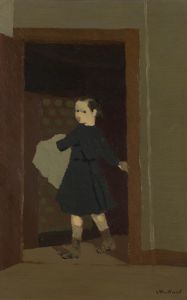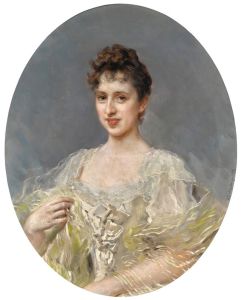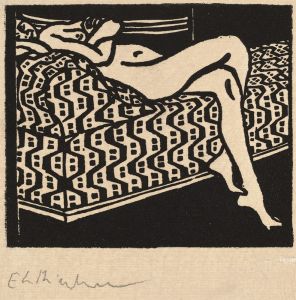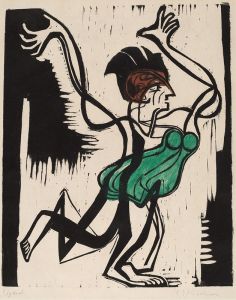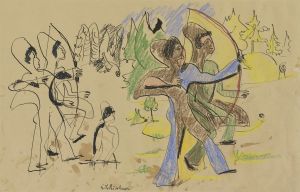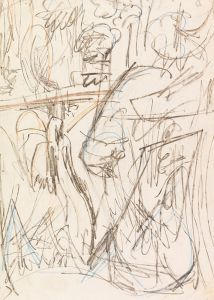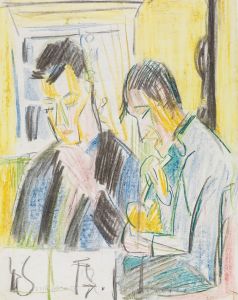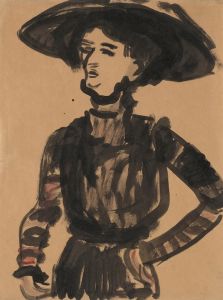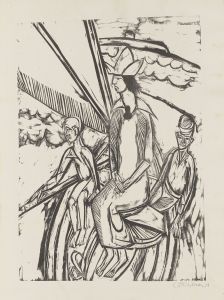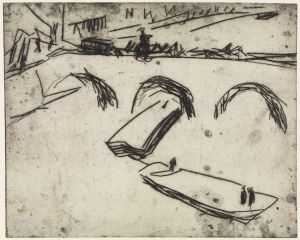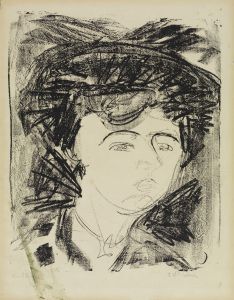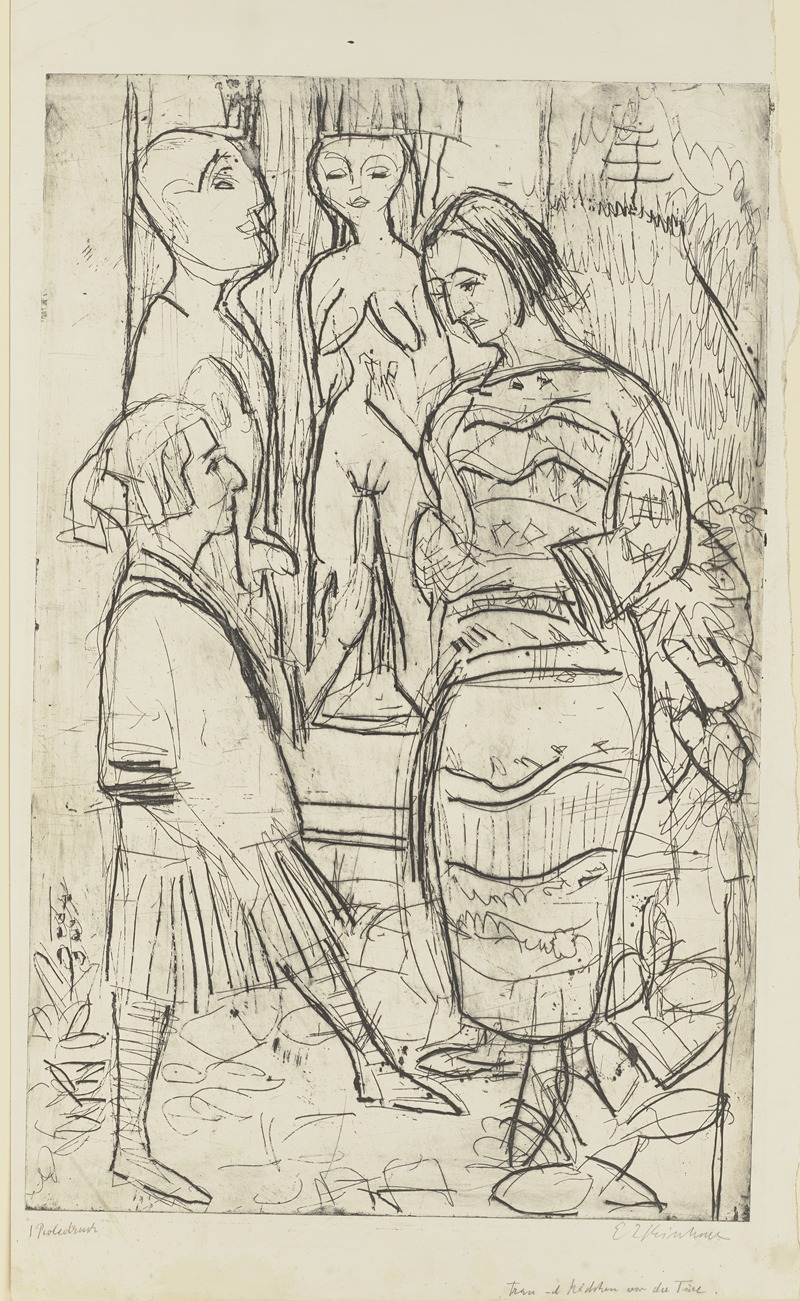
Frau und Mädchen vor der Türe
A hand-painted replica of Ernst Ludwig Kirchner’s masterpiece Frau und Mädchen vor der Türe, meticulously crafted by professional artists to capture the true essence of the original. Each piece is created with museum-quality canvas and rare mineral pigments, carefully painted by experienced artists with delicate brushstrokes and rich, layered colors to perfectly recreate the texture of the original artwork. Unlike machine-printed reproductions, this hand-painted version brings the painting to life, infused with the artist’s emotions and skill in every stroke. Whether for personal collection or home decoration, it instantly elevates the artistic atmosphere of any space.
Ernst Ludwig Kirchner (1880–1938) was a German expressionist painter and one of the founding members of the art group Die Brücke (The Bridge), which played a pivotal role in the development of modern art in the early 20th century. His works are known for their bold use of color, dynamic compositions, and emotional intensity, often reflecting the anxieties and tensions of modern life.
"Frau und Mädchen vor der Türe" (translated as "Woman and Girl in Front of the Door") is a painting by Kirchner. Like many of his works, it demonstrates his characteristic style, which blends influences from post-impressionism, Fauvism, and non-Western art forms. The painting depicts two figures, a woman and a girl, standing in front of a door. The composition is marked by Kirchner's expressive use of color and form, which emphasizes emotional resonance over realistic representation.
The exact date of the painting is not widely documented, but it likely falls within Kirchner's most productive periods, either during his time with Die Brücke (1905–1913) or his later years in Davos, Switzerland, where he moved in 1917. His works from these periods often explore themes of urban life, human relationships, and the psychological complexities of his subjects.
Kirchner's art was heavily influenced by the cultural and social changes of his time. His early works, including many of his portraits and street scenes, reflect the vibrancy and alienation of life in Berlin during the early 20th century. After moving to Switzerland, his style evolved, becoming more introspective and influenced by the natural surroundings of the Alps.
"Frau und Mädchen vor der Türe" is an example of Kirchner's ability to capture human figures in a way that conveys both their individuality and their connection to the broader emotional or social context. The painting's setting, with the figures positioned in front of a door, may suggest themes of transition, boundary, or interaction, though Kirchner's works often resist straightforward interpretation.
Kirchner's career was tragically affected by the rise of the Nazi regime in Germany. His art was labeled as "degenerate" by the Nazis, and many of his works were confiscated or destroyed. This, along with his ongoing struggles with mental health, led to his suicide in 1938. Despite this, his legacy endures, and he is regarded as one of the most important artists of the expressionist movement.
Further specific details about "Frau und Mädchen vor der Türe," such as its current location or provenance, are not widely available in public records.





